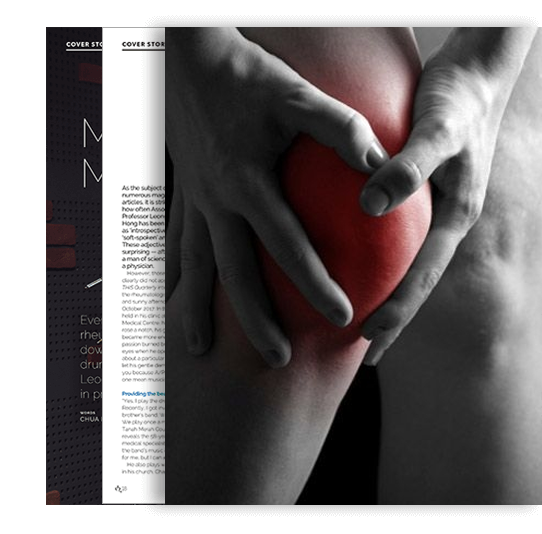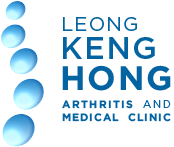Pain from the joints can arise from wear and tear or inflammation. Wear and tear occurs with excessive use of the joints or increased stress on certain joints caused by being overweight. This form of arthritis, often called “wear and tear” arthritis or osteoarthritis, increases with age. Meanwhile, inflammation is caused by an immune system attack on the joints such as in rheumatoid arthritis or there are crystal salts being deposited in the joint such as in gout. Arthritis is a catch-all term that simply means inflammation of the joints – there are in fact, over 100 different forms of arthritis. For example, rheumatoid arthritis is a form of arthritis that can lead to osteoarthritis. This is precisely why it is important to have one’s condition correctly diagnosed and treated.
Sometimes pain can occur from structures around the joints such as the tendon, ligaments or bursa. Examples are tennis elbow and trigger finger.
Inflammation in the joint leads not only to pain but also redness, warmth, swelling and stiffness in the morning that may last more than one hour. If there is disease activity, which happens in rheumatoid arthritis, infectionfighting cells (white blood cells) are mistakenly allowed into the joint. Once inside the joint, these white blood cells produce chemicals normally used to kill invading microorganisms. In this case, there are no microorganisms so instead, the chemicals end up damaging the healthy joint tissue. During high levels of disease activity, you experience a flare - the joints become swollen, stiff and painful.
The infection-fighting chemicals cause cartilage - the cushion between bones in a joint - to slowly degrade. This is worse if the person is overweight as putting stress on the joint or bearing weight on it over time, will wear down the weak cartilage even more.
Hence weight control is very important for joints that support the body weight such as the back hips, knees and ankles. Every one kilogram of weight put on translates to roughly five kilograms of weight loaded on to the joint.
So what steps can you take to alleviate the pain? Specific avoidance of certain foods is important only for gout. Muscle strengthening and flexibility exercises are important to protect the joint. Use of appropriate footwear is also important. Walking aids may sometimes play a beneficial role.
Exercise is crucial for people with arthritis. It increases strength and flexibility, reduces joint pain, and helps combat fatigue. The type of exercises to improve muscle strength and joint mobility depends on which muscles need strengthening. The thigh muscles support knee movements and can be strengthened by cycling. The spine can be helped by strengthening the back muscles through swimming. Physiotherapists help in working out tailor-made programmes for individual patients.
Overall, exercise can help you improve your health and fitness without hurting your joints. Along with your current treatment program, exercise can:
- Strengthen the muscles around your joints
- Help you maintain bone strength
- Increase your strength and energy levels to get through the day
- Help you get a good night’s sleep
- Help you control your weight
- Make you feel good about yourself and improve your sense of well-being
Many people are under the impression that exercise will aggravate their joint pain and stiffness but that is not necessarily true. In fact, lack of exercise may actually make your joints even more painful and stiff. That’s because keeping your muscles and surrounding tissue strong is crucial to maintaining support for your bones. Not exercising weakens those supporting muscles, creating more stress on your joints. Any movement, no matter how small, can help. If a particular workout or activity appeals to you, like the more gentle forms of yoga and tai chi, don’t hesitate to ask your doctor whether it’s right for you. Tai chi may improve balance and help prevent falls. Be sure to tell your instructor about your condition and avoid positions or movements that can cause pain.

